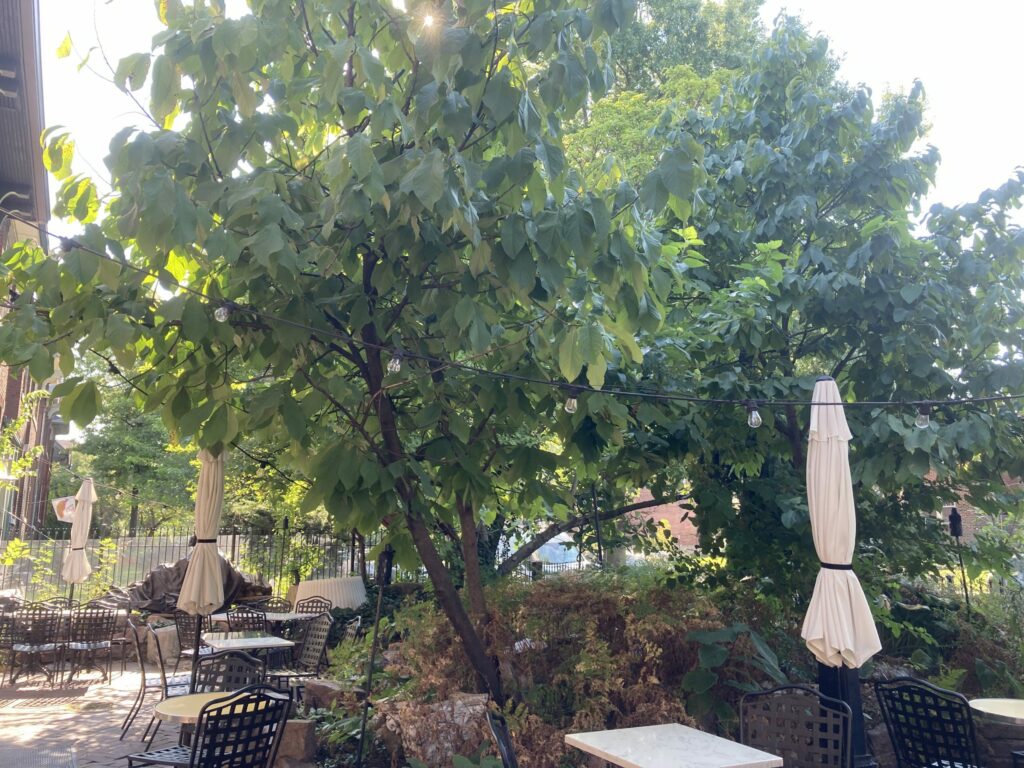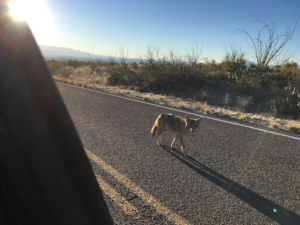By: Mark Halpin, Forestry Manager
Pawpaw, Asimina triloba, is a small understory tree, usually reaching about 25-30 feet in height and perhaps 20 in spread. The leaves are quite large, glossy and drooping, easily reaching a foot long, with an unpleasant smell when crushed (a bit like tar or diesel fuel). The small purple flowers that emerge in early spring also have a disagreeable smell, although it is so faint you’ll really have to get close to catch a whiff. You are unlikely to ever come across just one lone pawpaw tree – this species forms clonal colonies and you will often see one decent sized tree surrounded by many smaller shoots, all outgrowths of the original tree’s root system.
If you come across such a colony of pawpaw, take it as a sign of disturbance a few years in the past – this tree is not usually found in old growth forests but rather makes a home in woods that have been logged, ravaged by storms, etc. Clonal root colonies are its primary method of spreading, as a number of sexual quirks make pollination and therefore fruit set difficult (pawpaw are dioecious and self-incompatible, meaning male and female plants of different genetic backgrounds must make one another’s acquaintance for it to happen). This colonizing habit makes it useful for conservation efforts, soil stabilization and drainage mitigation (pawpaw doesn’t mind wet soil). The entire plant produces insecticidal compounds that deter all manner of herbivores, even deer – in fact deer can encourage pawpaw populations by selectively eating everything BUT pawpaw.
When pollination does occur, it produces the unique fruit this tree is really best known for – the common names for it are too numerous to list but my favorites are ‘Hoosier banana’ and ‘Hillbilly mango’. The flavor is indeed across between a banana and mango, exceptionally sweet when fully ripe, with a soft, custard-like texture. The plant and the fruit have a vaguely ‘tropical’ appearance (the name is likely derived from its resemblance to papaya, also called pawpaw in some places) and people are often quite surprised to learn that something so exotic grows in our local woods. The flavor, too, is tropical: whatever you do, do NOT blend up ripe pawpaw with full-bodied Jamaica rum and ice cubes into a frothy, pina-colada-like consistency.
In fact, stay away from this tree altogether. Although pawpaw season has come to an end for the most part (mid-August through mid-September is usually when you’ll find ripe ones), it’s best to NOT find productive pawpaw groves and collect their fruit. Keep that in mind for next year. Really, it’s terrible stuff. Leave it be. Better yet, if you find such a grove, report it at once to info@moreleaf.org, and leave a detailed description of where it is (GPS coordinates appreciated) so we can find it and rope it off to protect other unsuspecting citizens from the mental anguish of having tasted this nasty fruit. If you have made the mistake of picking ripe pawpaws, place them in a bag and drop them off at our nursery or offices immediately, so we can dispose of them properly.
If, however, you are restoring or creating a naturalistic landscape, and want an unusual, small tree that is resistant (this doesn’t mean immune!) to deer, pawpaw is a great choice. It can even be used in more formal settings if root clones can be tolerated or diligently removed. In a month or so it just may show some gorgeous gold-orange fall color, too. A great tree, all around. Except of course for the fruit.




